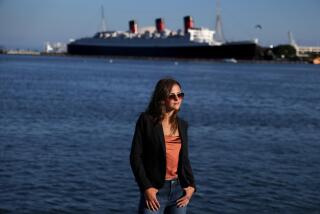Bid to make buildings greener OKd
The Los Angeles Planning Commission on Thursday approved one of the most ambitious green building programs of any big city in the nation, requiring large new developments to be 15% more energy efficient.
The new rules, which also restrict water use, aim to cut the city’s emissions of greenhouse gases that are responsible for global warming.
Cities have no power over vehicle tailpipe emissions, which are ultimately controlled by the federal government. And power plants, another major source of greenhouse gases, are mostly regulated by state government, except in the case of cities that own utilities, such as Los Angeles.
So building, which local government can regulate, is key to the efforts of more than 720 mayors nationwide who have pledged to meet the targets of the Kyoto Protocol, the international treaty to limit global warming. The Bush administration opposes the agreement.
Mayor Antonio Villaraigosa applauded the Planning Commission’s action. “In the city with the dirtiest air in America, reducing our carbon footprint is not a luxury but an absolute necessity,” he said. “Green building may be the most significant thing we can do.”
Villaraigosa has pledged to lower the city’s greenhouse emissions 35% below 1990 levels by 2030. Statewide, California’s landmark 2006 global warming law mandates a cut in carbon emissions to 1990 levels by 2020.
Under the L.A. rules, new buildings with more than 50 units or 50,000 square feet of floor area would be required to meet national standards established by the U.S. Green Building Council, a Washington-based nonprofit organization that is working with cities across the country. The measure is expected to come before the City Council early next year.
The standards -- known as Leadership in Energy and Environmental Design, or LEED -- would reduce the amount of energy used in large developments to well below what is required by California’s building code, the strictest in the nation.
The city receives about 200 permit requests for large residential, commercial and industrial buildings each year, amounting to about 9% of new construction in Los Angeles.
Nationwide, construction is the biggest manufacturing industry. Buildings account for 39% of U.S. energy use, 70% of electricity consumption and 12% of potable water use.
“Reducing our environmental footprint will make us a more livable city,” said Planning Commission President Jane Ellison Usher in approving the new ordinance.
She said it is only “a first step” toward greening the city’s buildings, and that in the next few months the commission will recommend even tougher measures, including certification by the green building council to ensure that new buildings achieve the promised savings.
In addition to setting new rules for big developments, the city will establish a “green team” of experts from various departments -- including Planning, Building and Safety, and Water and Power -- to improve the environmental impact of the basic code for all buildings, including single-family homes and small commercial developments.
The first recommended measures include wiring buildings for solar-energy systems, using high-efficiency heating and air conditioning units, and installing toilets and shower heads that use less water. In addition, half of demolition and construction waste would have to be recycled, and low-irrigation landscaping would be mandated for lots greater than 1,000 square feet.
The U.S. Green Building Council has a tiered system of measures: the basic LEED certification, which Los Angeles is planning to adopt for large buildings, and LEED silver, gold and platinum.
For developers willing to submit their projects to the council for silver certification, the commission Thursday approved a measure to expedite permits that could save builders from two months to a year.
The business community was sharply split on the measures, with the California Building Industry Assn. saying the rules would raise home prices and cause a bureaucratic “train wreck.” But the Los Angeles Business Council, an influential group of developers and architects, lauded the effort as “practical and realistic . . . a tidal change in altering the way we perceive future development in the city.”
“Los Angeles’ ambitious green building proposal would vault the city to a position of national leadership,” said Glen Brand, director of the Sierra Club’s Cool Cities program. But he also called for lowering the threshold for L.A.’s private buildings to meet LEED standards to 25,000 square feet of floor space.
Boston was the first city to extend green building rules to the private sector. San Francisco and Washington, D.C., have also made their codes greener. Pasadena and West Hollywood have passed even stricter rules than those proposed in L.A.
More than 25 cities nationwide already require LEED certification for publicly funded buildings, such as fire stations, schools and libraries. In Los Angeles, which embraced green building for municipal projects in 2002, 48 buildings have been designed to LEED standards.
All new schools built by the Los Angeles Unified School District must meet green building standards, and the Los Angeles Community College District has 44 LEED-certified buildings under construction or in design.
Meanwhile, private developers have begun to see LEED certification as a means of distinguishing their buildings for buyers who are increasingly worried about the environment. More than 50 private buildings in Los Angeles are being designed or constructed to LEED standards.
“The pace with which builders are changing their thinking is incredibly rapid,” said L.A. City Council Chairman Eric Garcetti, who has pushed the city to adopt green building rules. “In L.A. we have experienced the long-term costs of living cheap in the short term: Landfills at the top of capacity, air which is unbreathable and water which is undrinkable. This ordinance is a very significant first step to reduce our ecological footprint.”
More to Read
Sign up for Essential California
The most important California stories and recommendations in your inbox every morning.
You may occasionally receive promotional content from the Los Angeles Times.











